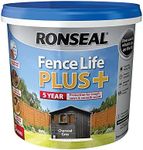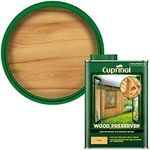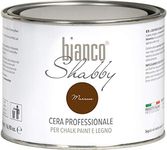Buying Guide for the Best Wood Fence Sealers
Choosing the right wood fence sealer is crucial to ensure the longevity and appearance of your fence. A good sealer will protect the wood from the elements, prevent rot, and maintain its natural beauty. When selecting a wood fence sealer, consider the following key specifications to make an informed decision that best suits your needs.Type of SealerWood fence sealers come in different types, including water-based, oil-based, and hybrid. Water-based sealers are easy to clean up, dry quickly, and are environmentally friendly. Oil-based sealers penetrate deeper into the wood, providing excellent protection and durability, but they take longer to dry and have a stronger odor. Hybrid sealers combine the benefits of both water and oil-based sealers. Choose a type based on your preference for ease of application, drying time, and environmental impact.
UV ProtectionUV protection in a wood sealer helps prevent the wood from fading and deteriorating due to sun exposure. This is important for maintaining the color and structural integrity of your fence. Sealers with high UV protection are ideal for fences in sunny areas. If your fence is in a shaded area, UV protection may be less critical, but it still offers added longevity.
Water ResistanceWater resistance is a key feature of a wood fence sealer as it prevents water from penetrating the wood, which can lead to rot, mold, and mildew. Sealers with high water resistance are essential for fences exposed to frequent rain or high humidity. If you live in a dry climate, you may not need the highest level of water resistance, but it is still beneficial for overall protection.
DurabilityDurability refers to how long the sealer will last before needing reapplication. More durable sealers will provide longer-lasting protection, reducing the frequency of maintenance. Consider how often you are willing to reapply the sealer. If you prefer low maintenance, choose a sealer known for its long-lasting durability.
FinishThe finish of a wood sealer can be clear, semi-transparent, or opaque. A clear finish will show the natural beauty of the wood, while a semi-transparent finish adds a hint of color and still shows the wood grain. An opaque finish provides the most color and hides the wood grain. Choose a finish based on your aesthetic preference and how much of the wood's natural appearance you want to retain.
Ease of ApplicationEase of application refers to how simple it is to apply the sealer to your fence. Some sealers can be applied with a brush, roller, or sprayer, while others may require more specific tools or techniques. If you are a DIY enthusiast, look for a sealer that is easy to apply and comes with clear instructions. Professional-grade sealers may offer better protection but could be more challenging to apply.
Drying TimeDrying time is the amount of time it takes for the sealer to dry and cure completely. Faster drying times are convenient if you need to use the fence or if rain is expected soon after application. However, slower drying times can allow for better penetration and protection. Consider your schedule and weather conditions when choosing a sealer with an appropriate drying time.
















